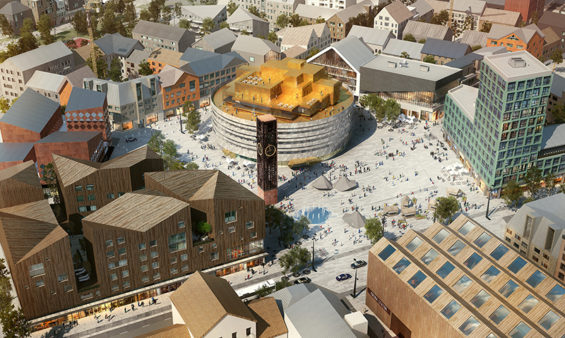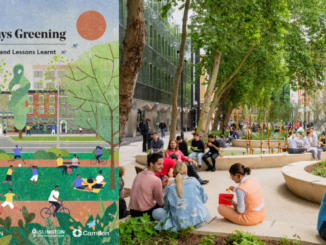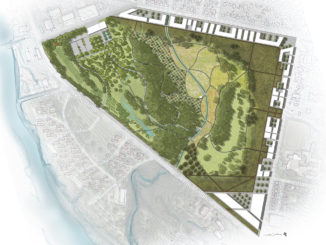Located in a magical place in the Arctic North of Sweden, where the sun never sets at the height of summer and never rises in the depths of winter, is a city that must move. In the urban settlement of Kiruna, White Arkitekter is working with the 18,200 people to face one of their biggest challenges: relocating their entire city several kilometres eastward to escape erosion caused by decades of iron ore extraction. The ambition for their new home is to improve their quality of life and the city’s environmental footprint – all without losing its identity.
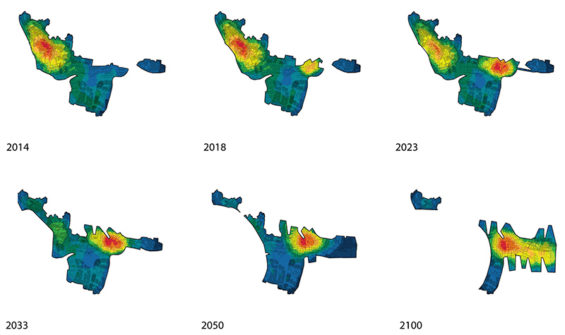
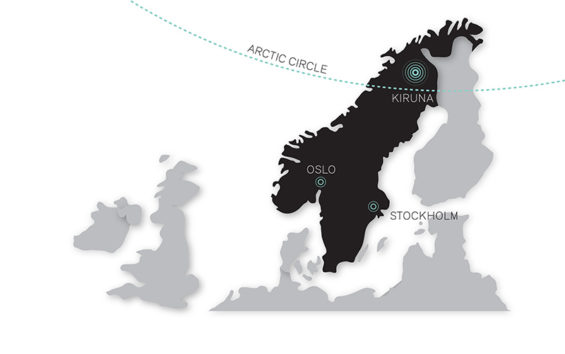
Founded in 1900, Kiruna’s current location is based on its proximity to large deposits of iron ore. As mining activity continues, following an iron deposit that runs under the town itself, the subsequent degradation of the land will affect the central areas of the town. White together with Ghilardi + Hellsten Architects proposed Kiruna 4-ever, the winning entry in an international architectural competition and the basis for Kiruna’s new master plan. Discovering the city’s cultural and social DNA was the starting point and inspiration as White sees the citizens of Kiruna as the most vital resource of all for the city’s successful transformation. Kiruna 4-ever is a 100 year masterplan taking into consideration local traditions, climate, and weather along with the practical and the cultural symbolism of cardinal direction.
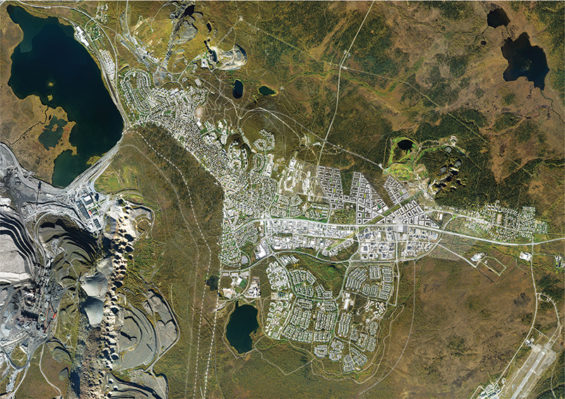
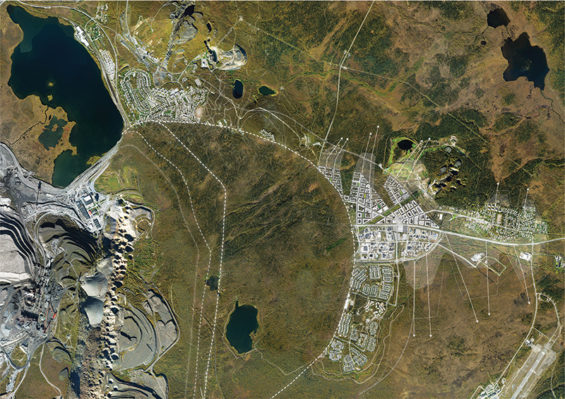
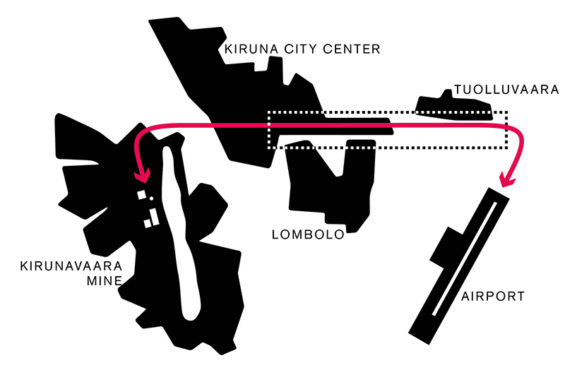
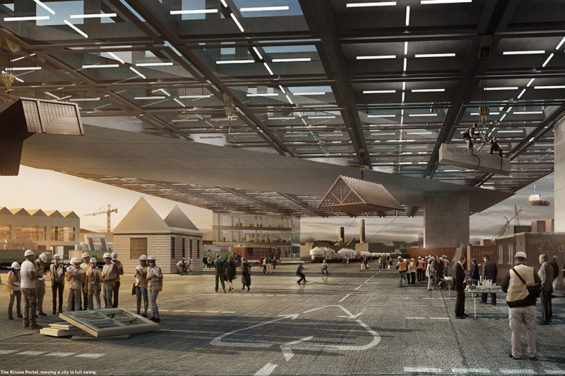
White’s vision for the transformation of Kiruna will take place in phases. A series of projects will allow the city to “crawl” along a new urban belt to its new home. This belt, focused around a central street Malmvägen, will link central Kiruna to the nearby settlements of Lombolo, Tuolluvaara, the airport and the mine at Kirunavaara. The character of the former Kiruna will be retained through the re-use of materials from demolished buildings, and some of the culturally significant built elements, including a historic church, will be relocated unaltered. The old Kiruna will be gradually phased out and once the town becomes more vibrant further to the east, the community will relocate.
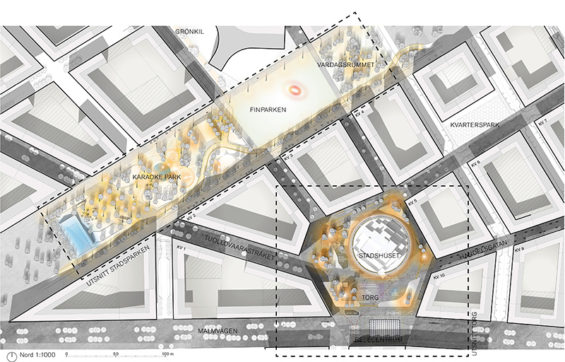
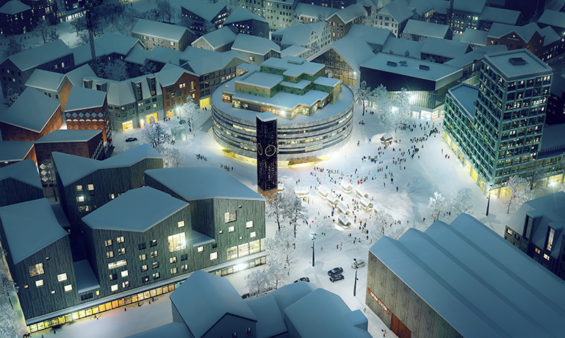
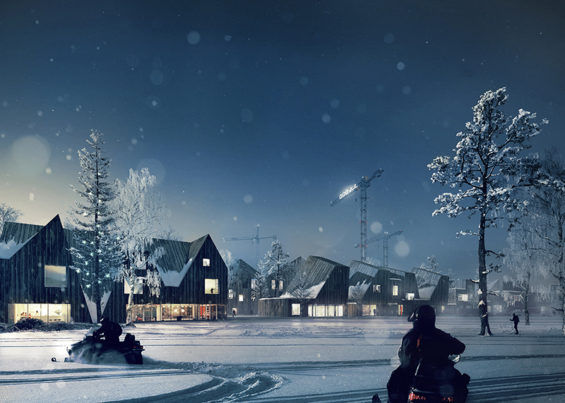
There is a deep desire for Kiruna residents to intertwine daily life with nature in this magical place, where the sun never sets at the height of summer and never rises in the depths of winter, where snow sports are plentiful for many months of the year and the Aurora Borealis is frequently overhead. A close consultation with the entire community harnesses the collective memory of today’s Kiruna, which will gradually disappear; simultaneously, a common vision for the future is created. Knowledge, effort and commitment of its residents as well as the city’s potential to attract people and business from elsewhere is the key to a sustainable future.
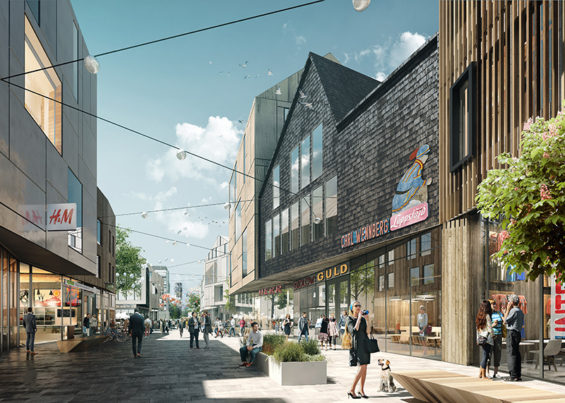
For this reason, the strategy to transform Kiruna also includes process tools to encourage, and systematize public involvement to enrich the ideas for the new community – an approach with a quiet command and humility. One such tool being used is a dialogue process that includes everyone who lives or works in Kiruna, their stories, memories, identities and personalities as input. White’s social anthropology team spent two weeks gathering information and inspiration from Kiruna citizens before any design decisions were made. From their research, a picture emerged of an educated, affluent, multi-cultural community with a desire for more opportunities to engage and socialise, greater access to outdoor leisure pursuits and more attractive cultural offerings to appeal to younger citizens, women and families. And so, the dialogue will continue.
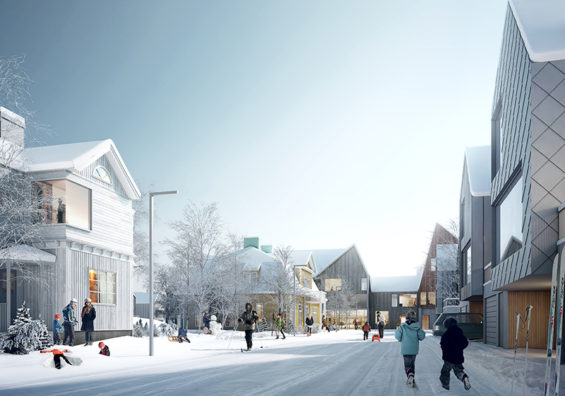
Engagement with the community has informed the master plan, and an ongoing dialogue will be implemented in the following three ways: formal and informal discussions and feedback with the community; a proposed Kiruna Biennale to exhibit the vision for the city and host events to share the story; and the Kiruna Portal, an extra-large communal shop and ‘build it yourself’ facility and construction recycling depot, where remnants of the old city can be reused, recycled and retrofitted into the new.
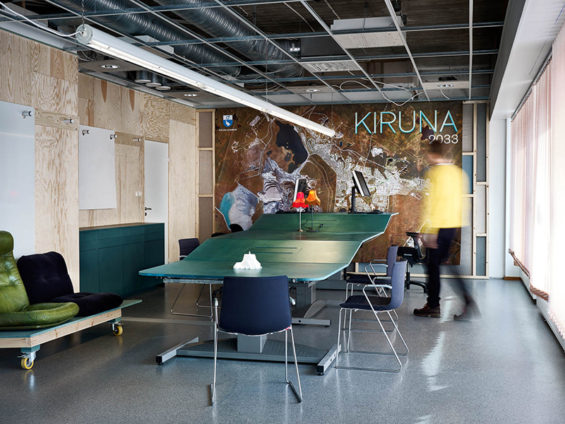
Moving the city understandably provokes both anxiety and anticipation among the citizens of Kiruna. In 2015, White opened its doors to Kiruna’s first architecture studio, Ett Arkitekt Kontor (“An Architect Office”). The studio will work as a platform for White to engage the community as the plans develop for the city’s relocation east. As well as its function as a workspace, the new studio will act as a community centre, welcoming the public for informal coffee mornings, hosting events and exhibitions. The new office occupies a vacant store in Kiruna’s current city centre. Furniture and other materials have been collated from the city and reused to construct a studio interior imbued with a local identity.
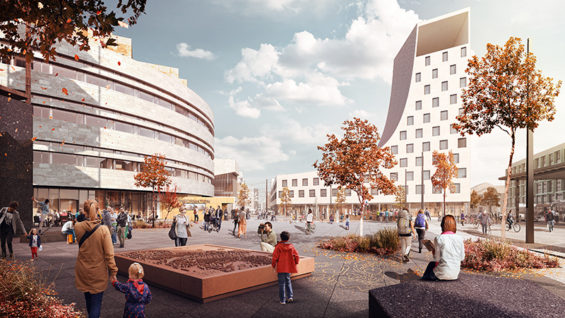
(Kiruna Square)
Creation of place is all-important and the greatest challenge is found in the social aspects of transformation. White’s ambition is to choreograph the process of creating an improved, dense Arctic city amidst the vast landscape. The ensuing design intensifies social engagement in the city centre by combining civic, shopping and cultural opportunities around a new civic square, served by a transport hub which in turn serves an extensive bus system throughout the city. The vision for Kiruna Square is to create a vibrant multifunctional meeting place with a strong identity in the heart of the city. There should be space for large events like the yearly Kiruna Festival but also be a place to be on an ordinary day of the week any time of the year.
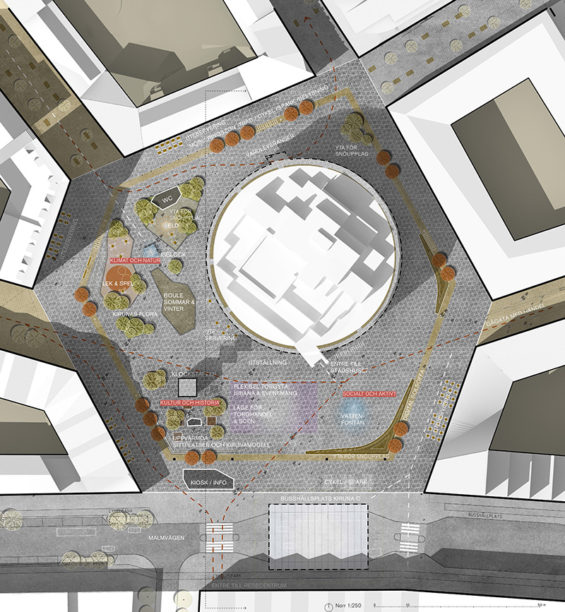
Kiruna Square is for everyone – a place for residents and visitors to feel at home, accepted and welcome even with no purchasing intent. Utmost important is the consideration of the needs of children and adolescents in the formation of the square. Aspects of priority include the ability to be in the square during different times of the day without feeling overly cold or exposed, feeling safe and secure in an adequately lit environment.
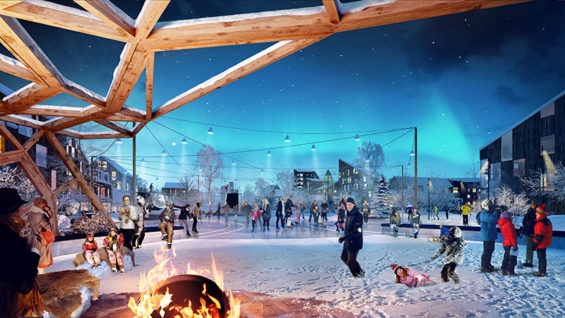
(Kiruna Park)
Kiruna inhabitants are keen on the great outdoors, and the new design incorporates far greater opportunity for activity. A large public park is to sit north of the civic square, giving visitors, residents and nearby schools ample access to its lawns and sporting fields. The design and formation takes into consideration adaptation to microclimate and seasonal changes. During the colder months, a winter park is in full swing with an ice rink and cross-country ski trails as well as cosy-warm, well-lit meeting places. Seasonal extremes of the inland climate create a multitude of scenarios – and 8 seasons. The Sami, reindeer herders and the only indigenous people of Scandinavia, have a culture based entirely on nature. Traditionally, the Sami live by a calendar of 8 seasons which is an age-old cycle based on the annual behavioural patterns of reindeer and of birth and death.
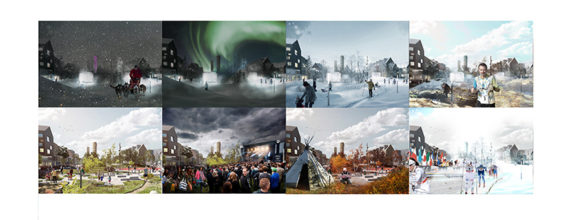
Meanwhile, the design of the residential neighbourhoods – which extend like urban “fingers” grasping into the generous expanse of Arctic nature – will give Kiruna residents a chance to hike, ski or bike easily across the city and beyond. The city park will be like Kiruna’s green living room – a meeting place for youth and adults, full of movement and experiences. Weather protected places and the possibility for light therapy should ensure the park’s pleasant atmosphere. It’s important that the park doesn’t have a “newly planted” feeling. Tree growth is slow in Kiruna and that’s why it is considered important that the park is green with larger mature trees right from the start. Tests are being conducted to see if a solution could be to move mature trees from the old site to the new site.
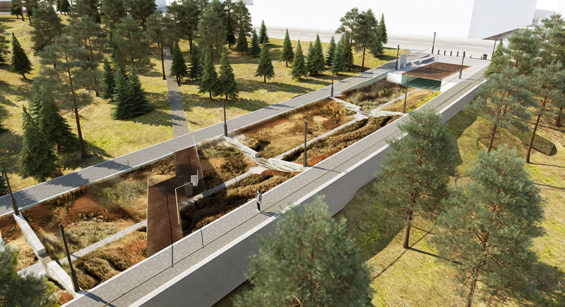
White designed the first sub-Arctic storm water park with construction slated to begin in early 2017. The park plays a major part in the overall storm water management structure of the entire city, administering storm water and high water levels due to warming springtime temperatures. For residents of Kiruna, visitors, students and tourists alike, the Stormwater pilot project also anticipates an educational function of explaining how sustainable storm water management works in accordance with Kiruna’s position in the water-rich mountains.

